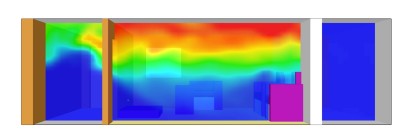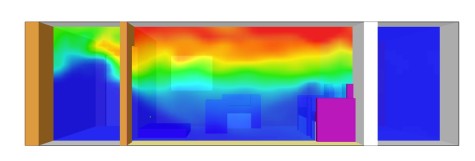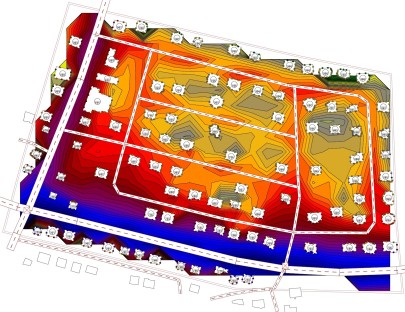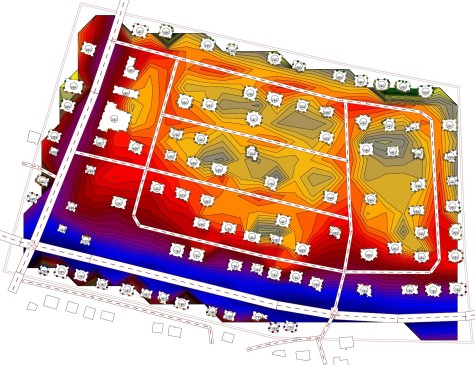Contents
Knowledge of building physics is an essential prerequisite for the planning, execution and repair of buildings and influences almost every trade involved in a construction project. The non-observance of structural-physical correlations can result in multiple structural damages.
The module consists of a lecture part and exercises during the semester.
The aim of the master's course “constructive building physics” is therefore to teach students the ability to find interdisciplinary engineering solutions, to explain them in a factual and understandable way, and to make and justify decisions based on practical cases of damage.
The course covers the areas of heat, moisture, sound and fire and focuses on design details in the planning and execution of buildings and their operation.
For this purpose, the application of the respective programs is demonstrated in the exercise at the beginning and then smaller tasks are entered and calculated by the students themselves. The application of the programs and calculation of the tasks takes place depending on the software in the PC pool or on the own laptop in the lecture hall. If not every student has a laptop available, groups of two students can also work on the exercises on one laptop.
The exercises will cover the following topics or programs:
- Energetic planning and evaluation of residential and non-residential buildings (EnEV verification) with Hottgenroth energy consultant 18599
- Thermal bridge simulation (Psi value and fRSI calculation) with Hottgenroth PSI-THERM
- Hygrothermal simulation of building components with WUFI 2D
- Microscopic and macroscopic properties of a fire and fire behavior of building materials with Fire Dynamics Simulator (FDS) based on Computational Fluid Dynamics
- Noise immission control (determination of the external noise level) with DataKustik CadnaA
Important information
Knowledge of the fundamentals of building physics is assumed and is only briefly touched upon in this course. To learn the basics, we recommend the lecture “Fundamentals of Structural Engineering, Part 2” and the lecture “Building Physics”.
Students are required to bring their own laptop for the exercises.
Course work: homework exercises (Moodle) requiring a test result.
Examination: Written exam (90 min.)
Lecture
| Professor | Prof. Dr.ir. Eddie Koenders |
| Supervision by: | M.Sc. Liliya Dubyey |
| Rotation | Winter Semester |
| Requirements | Knowledge of building physical basics (attend the lecture “Basics of structural engineering, part 2” |
| Credit Points | 6 CP |
Literature recommendations
| Lecture notes |
| “Lehrbuch der Bauphysik: Schall – Wärme – Feuchte – Licht – Brand – Klima” von Ekkehard Richter, Heinz-Martin Fischer, Richard Jenisch, Hanns Freymuth, Martin Stohrer, Peter Häupl |
| “Praktische Bauphysik: Eine Einführung mit Berechnungsbeispielen” von Gottfried C. O. Lohmeyer, Matthias Post, Heinz Bergmann |
| “Bauphysik kompakt: Wärme, Feuchte, Schall” von Klaus W. Liersch, Normen Langner |
| Vieweg Verlag, “Handbuch Bauphysik 1: Wärme- und Feuchteschutz, Behaglichkeit, Lüftung: TEIL 1” von Wolfgang M. Willems, Simone Dinter, Kai Schild |
| Vieweg Verlag, “Handbuch Bauphysik 2: Schall- und Brandschutz, Fachwörterglossar deutsch-englisch, englisch-deutsch: TEIL 2” von Wolfgang M. Willems, Kai Schild, Simone Dinter |
| “Klausurtraining Bauphysik: 521 Prüfungsfragen mit Antworten zur Bauphysik” von Eva Lübbe |







